Quebec's Charlevoix region still recovering 1 year after devastating flooding
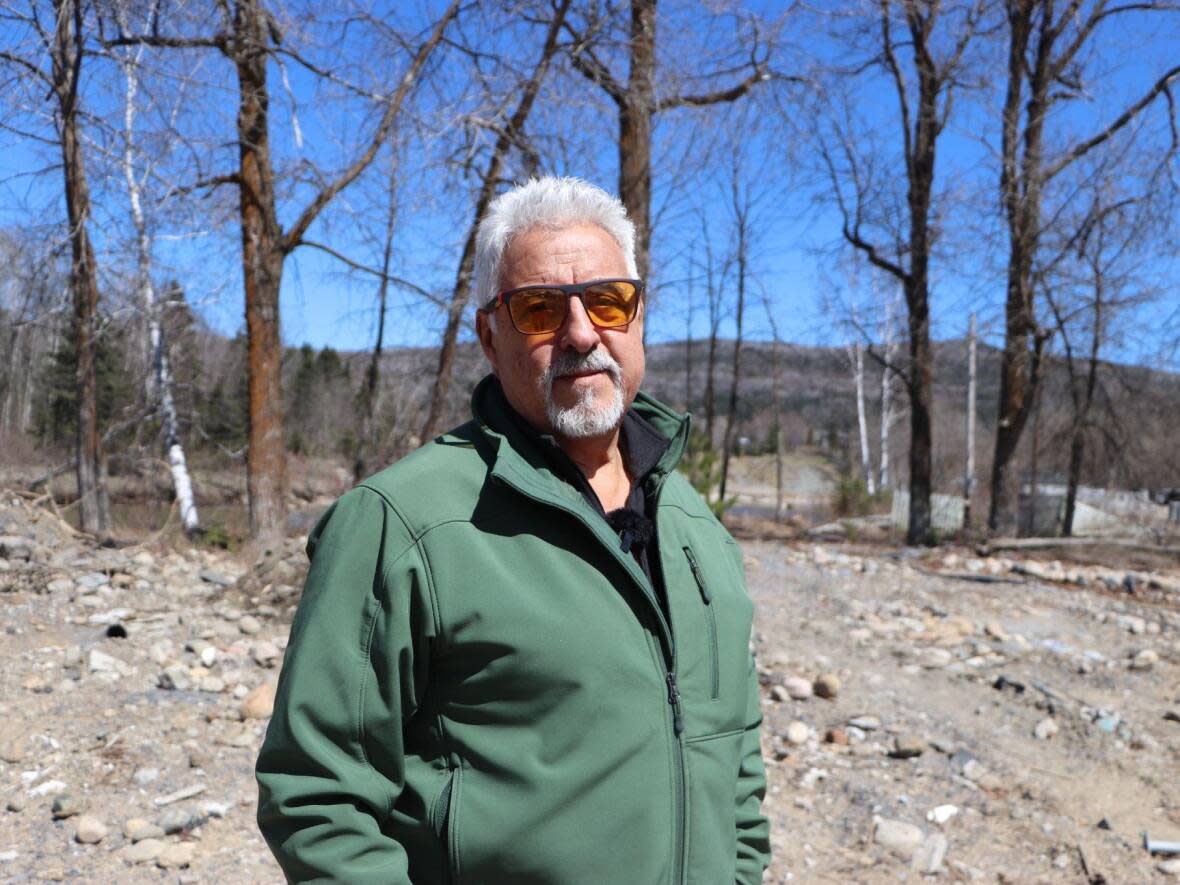
Pieces of Humberto Pinochet's art gallery and home are still scattered along the side of Rivière-du-Gouffre in Baie-Saint-Paul, Que., a year after historic flooding washed away years of memories and artwork.
Shards of glass, frames and pieces of painted wood are among the rocks and rubble — the only remnants of his home which was demolished last fall.
"That was the moment that I see that kind of dream disappear," said Pinochet, with a pause.
"I built that with my hands. It was a very special place."
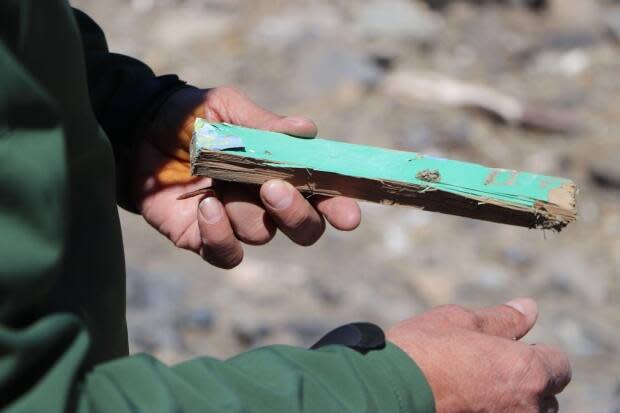
A year after the flooding forced the evacuation of hundreds of residents in Quebec's central Charlevoix region, caused severe property damage and led to the deaths of two volunteer firefighters, Pinochet says the community is moving forward but will always look different.
"The property was destroyed. And we couldn't rebuild," said Pinochet. He said it would have cost him nearly $1 million.
'Lost our joie de vivre,' says resident
Following several demolitions, part of the town still feels empty, says resident Marc Laforge.
"We're a long way from getting over this," said Laforge, walking across Pinochet's property alongside his wife, Brigitte Cloutier, as part of their afternoon stroll in the tight-knit neighbourhood.
"The community was so hurt by what happened," said Laforge.
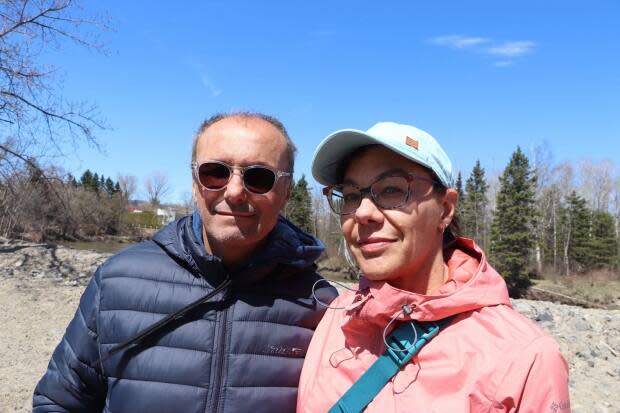
"Even though we were not affected, we were feeling the same drama.… It was so devastating."
"We kind of lost our joie de vivre," added Cloutier, wiping tears from her eyes.
"Just seeing people, imagining their pain, seeing that devastation."
The couple says rebuilding for many who lost their homes is still up in the air — some of whom are struggling to find a place to stay during a housing crisis.
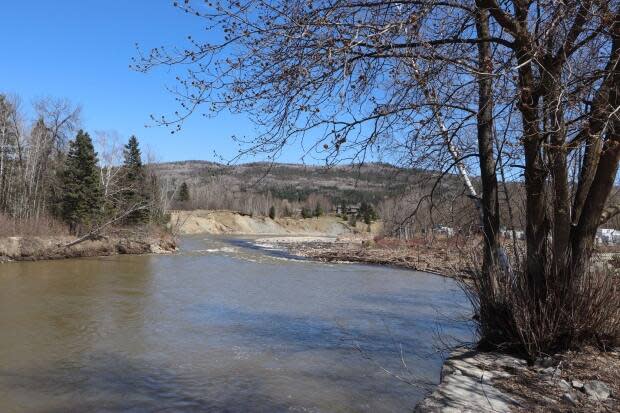
"After a year, I am still staying at my sister's house," said Nicole Lavoie.
The resident of Baie-Saint-Paul says her first floor was unsalvageable after the rainwater rose one metre in her home. It was demolished in December.
"It still makes me emotional," said Lavoie. "I just want to have a roof over my head."
She says there aren't enough affordable housing options in town.
"It costs like $1,000 or $1,300, and that's too much for a retiree. I don't have the salary for this," said Lavoie, who attended the town's commemoration event on Wednesday.
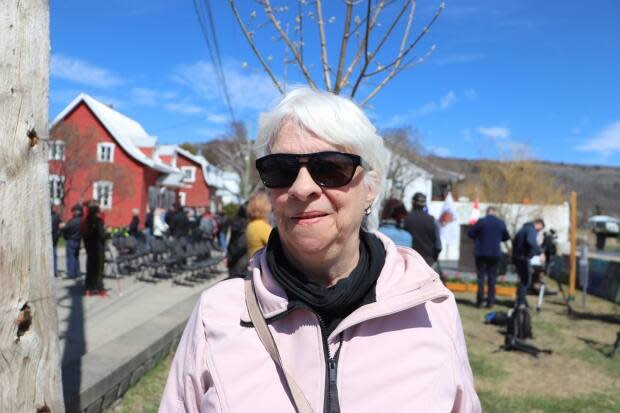
Quebec Public Safety Minister François Bonnardel says his government has handled more than 300 requests for financial assistance in the region following the floods.
He says as the climate changes, the government has spent $80 million for municipalities to prepare for flooding.
Bonnardel addressed the community alongside Mayor Michaël Pilote and Kariane Bourassa, the local MNA. They awarded several of the town's firefighters awards in recognition of their bravery.

"For us in the town, it was important to take a little time to commemorate," said Pilote.
"We wanted to take the time, first and foremost, to honour our firefighters. But at the same time, to look back at what we experienced last year."
Saint-Urbain, Que., also held a ceremony Wednesday, unveiling a commemorative plaque with the faces of Régis Lavoie and Christopher Lavoie, the two firefighters who died.
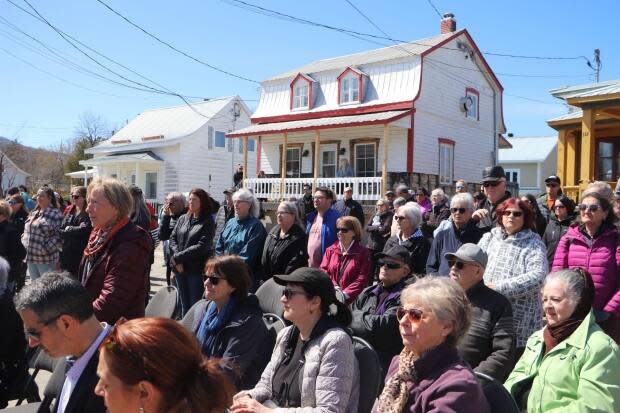
'100-year storm' top of mind this spring
Although the skies were sunny and clear on the anniversary of the flooding, this time last year things looked very different, says Everist Prokofiev, who runs another gallery in Baie-Saint-Paul.
His basement gallery was coated in mud and the river that usually sits metres below his property line washed up onto his parking lot.
"We had a tremendous amount of rain last year. A lot of snow in the mountains that was melting.… That really created the 100-year-storm here," said Prokofiev.
"The whole neighbourhood behind me, there was dozens of homes that were affected."
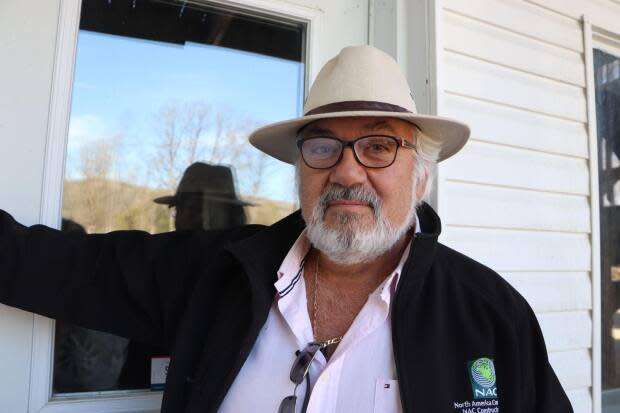
He said the community banded together, cleaning the streets and each other's homes in about six weeks.
Although the flooding is behind them, Prokofiev says it's still top of mind..
"Anticipating April and May, I must say that we were concerned," said Prokifiev.
"We've never experienced anything like this before and we were afraid there might be a repeat."
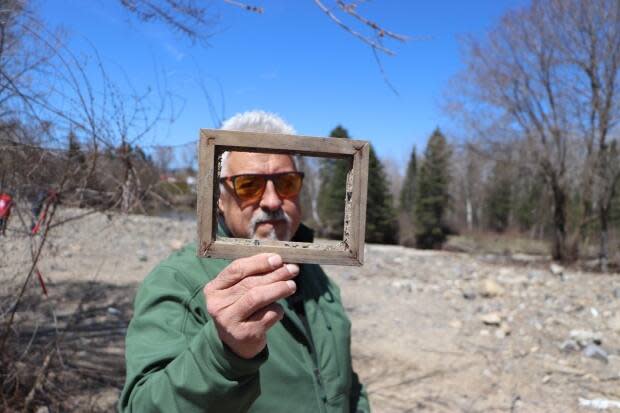
Inspired by the devastation, Pinochet made an exhibition following the floods titled sortir la tête de l'eau — emerging from the water.
Although he still finds algae among some of his paintings, which now lay in boxes in his apartment in town, he's also seeing some of the works "transformed by the water."
"Life is like that. Sometimes there is a shadow. Sometimes this shadow [gives] us the opportunity to see where the light is. We have to continue."
Pinochet's waterfront property will be transferred to the city where he hopes a public park will be set up as a space for artists like himself to return for inspiration.


